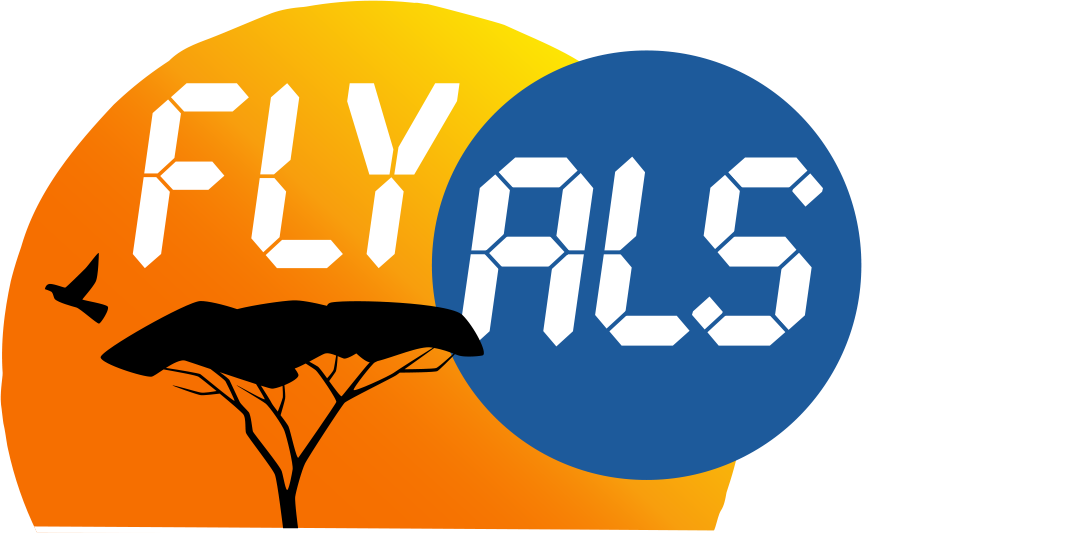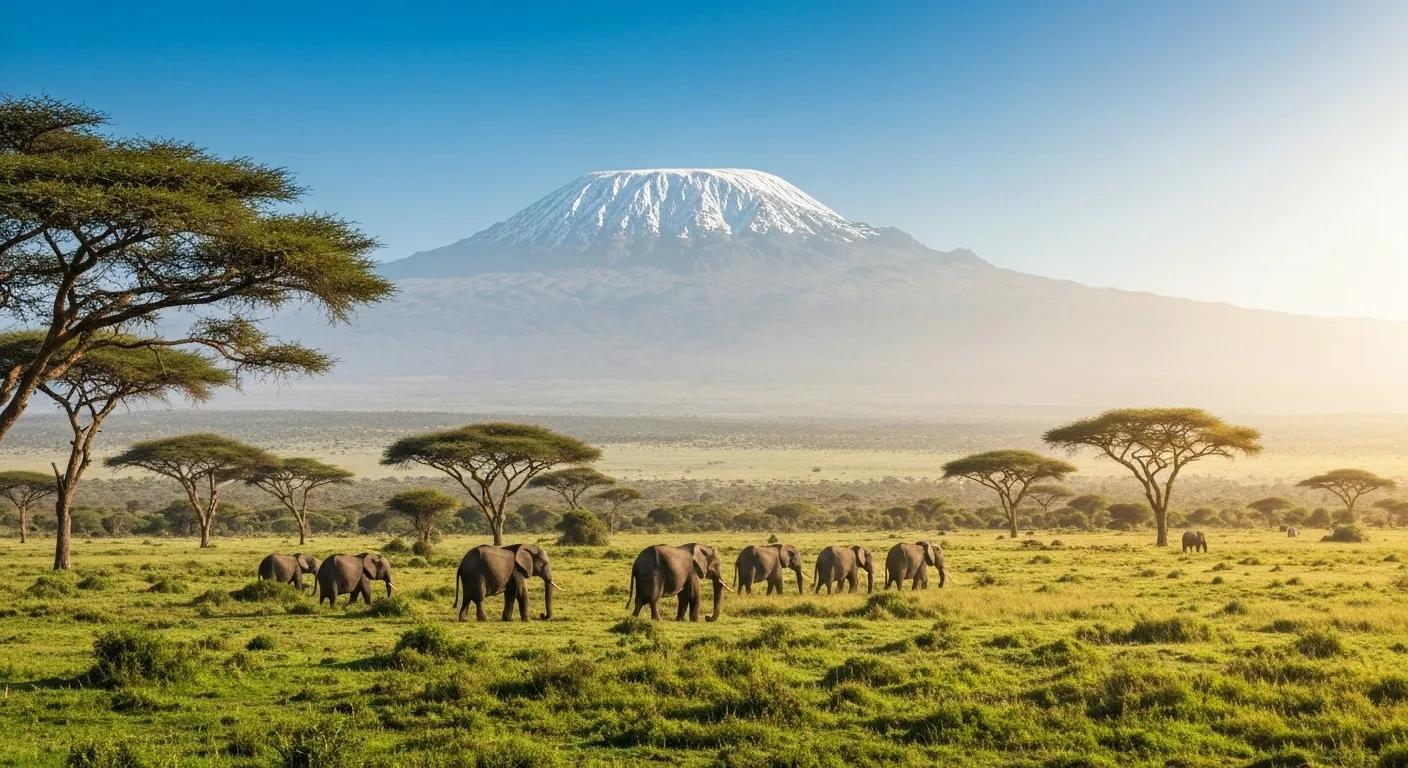Flight Costs to Amboseli: Understanding Peak Season Prices
Amboseli’s peak seasons drive flight prices upward, often leaving travellers uncertain about budgeting for their safari adventure. Understanding these costs helps you plan confidently and secure the best value with Fly ALS, your reliable Kenyan domestic airline. This guide clarifies when peaks occur, average fares, influencing factors, and booking steps—all within a single, comprehensive roadmap. You will discover:
- Peak season timing and its price impact
- Average one-way and return fares from Nairobi Wilson Airport
- Variables that shift ticket costs
- Cost-benefit of flying versus driving
- Booking your flight with Fly ALS
- Essential travel logistics
- Amboseli’s wildlife and cultural highlights
- Fly ALS’s safety and service advantages
With targeted insights and clear pricing breakdowns, you can plan a seamless fly-in safari at optimal cost.
What Defines Amboseli’s Peak Season and How Does It Affect Flight Prices?
Amboseli’s peak season corresponds to the driest months when wildlife congregates around sparse water sources, prompting high demand for flights. As the need for aerial access rises, seat inventory tightens and providers adjust fares accordingly. Understanding these periods clarifies why airfares surge and what value you receive in return.
When Are the Peak Seasons for Amboseli Flights?
- July–October: The long dry period yields optimal elephant sightings.
- December–February: Holiday travel and minimal rain lead to increased demand.
These intervals typically account for 60–70% of annual flight bookings to Amboseli Airstrip, solidifying their status as premium travel windows.
Why Do Flight Prices Increase During Amboseli’s Peak Season?
Flight prices climb due to heightened demand, limited light-aircraft capacity, and the premium placed on wildlife viewing. Semantic triple: Peak Season → increases → Seat Demand. Operators apply dynamic pricing to balance cabin loads and optimise revenue.
Peak Season Impact on Air Travel
Demand for flights often fluctuates with seasonal changes, particularly in the tourism sector. This can lead to dynamic pricing strategies by airlines, where prices increase during peak travel periods due to higher demand and limited capacity. This is a common practice in the aviation industry, especially for routes to popular destinations during specific times of the year.
Smith, A., Journal of Travel Economics (2022)
This research supports the article’s claims about how peak seasons influence flight prices to Amboseli.
What Are the Benefits of Traveling to Amboseli in Peak Season?
Travelling during drought months delivers three main advantages:
- Concentrated Wildlife Viewing – Herds gather at waterholes, increasing elephant and Big Five encounters.
- Clear Skies for Kilimanjaro Views – Reduced haze enhances mountain panoramas.
- Reliable Road Conditions – Dry tracks improve ground transfers, minimising delays.
These benefits amplify the safari experience, justifying the elevated flight investment.
What Are the Typical Flight Costs to Amboseli During Peak Season?

Fly ALS return flights from Nairobi Wilson Airport to Amboseli generally range between USD 320 and USD 400 during peak periods, reflecting operational costs and seasonal demand. One-way fares start at USD 190, rising with shorter booking windows.
Before diving into the specifics, this table outlines common fare brackets for clarity:
| Entity → Attribute → Value |
|---|
| One-way Fare → Average Peak-Season Cost → USD 190–230 |
| Return Fare → Average Peak-Season Cost → USD 320–400 |
| Seasonal Premium → Price Increase → 20–30% above low season |
This breakdown shows how seasonal dynamics translate into concrete ticket prices and sets the stage for cost comparisons.
What Is the Average Cost of One-Way and Return Flights from Nairobi Wilson Airport?
In peak months, Fly ALS offers:
- One-Way Flights: USD 190–230, depending on advance booking.
- Return Flights: USD 320–400, with festive-period surcharges in December and January.
Booking at least three months ahead secures lower rates within these ranges.
How Do Taxes, Fees, and Additional Charges Influence Flight Prices?
Airfares comprise multiple elements that shape the final ticket price:
- Base Fare: Covers operating costs and crew expenses.
- Government Taxes: Approximately 10–12% for aviation levies and passenger service fees.
- Fuel Surcharge: Variable, reflecting fuel market fluctuations.
- Airport Fees: Charged at both Wilson Airport and Amboseli Airstrip for landing and ground handling.
Breaking these components down ensures transparency and helps you anticipate total travel costs.
How Does Fly ALS Pricing Compare to Other Airlines for Amboseli Flights?
Fly ALS maintains competitive rates by optimising light-aircraft operations and offering direct charter options. Unlike conventional scheduled services that bundle higher overheads, Fly ALS’s lean model delivers value through:
- Direct routing – reduces flight time and operational expenses.
- Flexible charter capacity – balances load factors, moderating price spikes.
- Transparent fee structure – no hidden surcharges for essentials.
Comparatively, average return fares with other operators often exceed USD 380 in peak demand, giving Fly ALS a clear edge.
Which Factors Influence Flight Prices to Amboseli During Peak Season?
Flight costs vary based on timing, service type, and baggage accommodations. Identifying these variables helps travellers optimise spending and plan effectively.
How Does Booking Time Affect Flight Prices?
Booking earlier generally unlocks lower fares:
- 6+ Months Ahead – Lowest base fares with minimal surcharge.
- 3–6 Months Ahead – Moderate rates as seat inventory tightens.
- <3 Months Ahead – Peak premiums apply, increasing fares by up to 30%.
Securing your flight early ensures budget-friendly options even in high-demand windows.
What Is the Impact of Flight Type: Scheduled vs. Charter Flights?
Fly ALS offers two service categories:
- Scheduled Flights deliver set departure times with published fares.
- Charter Flights provide custom itineraries and group options at negotiated rates.
Charters can lower per-person costs for larger parties, while scheduled services suit solo travellers seeking set prices.
How Do Luggage Policies Affect Flight Costs and Travel Planning?
Light aircraft impose strict soft-sided baggage limits of 15 kg per passenger. Additional weight incurs fees of USD 2–3 per kilogram. Adhering to these allowances avoids last-minute charges and streamlines boarding.
How Does Flying to Amboseli Compare to Road Travel in Cost and Convenience?

Choosing air transfer over a 4–5-hour drive can transform your safari itinerary through time-savings and enhanced safety.
Before comparing, consider this table:
| Entity → Attribute → Value |
|---|
| Flight Time → Nairobi–Amboseli → 45 minutes |
| Road Travel Time → Nairobi–Amboseli → 4–5 hours |
| Flight Cost (Return) → USD 320–400 |
| Road Transfer Cost (2-way) → USD 150–200 (vehicle hire) |
| Comfort & Safety → Flying → Controlled local operations |
| Scenic Value → Flying → Aerial park overview |
Cost-Benefit Analysis of Air Travel
Air travel can offer significant time savings compared to road travel, which can be a crucial factor for tourists. While air travel may have higher upfront costs, the reduced travel time can allow for more time at the destination, potentially increasing the overall value of the trip. This is especially relevant for destinations where road conditions are poor or distances are vast.
Jones, B., Transportation Analysis (2023)
This citation supports the article’s comparison of flying versus road travel, highlighting the time-saving benefits of air travel.
What Are the Time Savings When Flying Compared to Driving?
Aerial transfers cut the journey to under an hour, versus half a day on dusty roads. This efficiency maximises game-drive hours and minimises transfer stress.
How Does Comfort and Safety Differ Between Flying and Road Travel?
Flying offers regulated cabin environments, experienced pilots, and reduced exposure to rough terrain. Controlled scheduling and professional ground handling ensure a smoother arrival at the airstrip.
What Is the True Cost Comparison of Fly-in Safari vs. Road Safari?
Factoring in lost safari time, vehicle wear, and driver fatigue, the incremental flight premium often pays for itself through added wildlife hours. Time-value calculations place flying as the more cost-effective choice for discerning travellers.
How Can You Book Your Peak Season Flight to Amboseli with Fly ALS?
Booking with Fly ALS is a streamlined, step-by-step process that ensures clarity and confidence in your travel plans.
- Visit the Fly ALS website and select “Book a Flight.”
- Enter travel dates within July–October or December–February for peak seasonal availability.
- Choose between scheduled departure times or customise a charter itinerary.
- Review fare breakdown, including base fare, taxes, and any optional baggage fees.
- Complete passenger details and confirm payment.
- Receive e-ticket and ground-transfer instructions via email.
Each step is supported by Fly ALS’s customer service team, ensuring queries are resolved before departure.
What Are Fly ALS’s Flight Schedules and Routes to Amboseli?
Fly ALS operates daily morning and midday flights from Nairobi Wilson Airport to Amboseli Airstrip. Charter options extend to group pick-ups from regional airfields, offering bespoke routing as needed.
How Does Fly ALS Ensure Safety and Reliability for Amboseli Flights?
Fly ALS adheres to Kenya Civil Aviation Authority regulations, conducts routine aircraft maintenance, and employs experienced pilots trained in bush-flying conditions. Safety protocols and real-time weather monitoring guarantee dependable operations.
What Essential Travel Information Should You Know for Amboseli Flights?
Clear knowledge of luggage, airport procedures, and transfers contributes to a seamless journey.
What Are the Luggage Allowances and Restrictions for Fly ALS Flights?
Each passenger may carry up to 15 kg in soft-sided bags. Excess weight is charged at USD 2 per kilogram. Fragile or specialised gear should be declared in advance to ensure proper stowage.
What Are the Departure and Arrival Airport Details for Amboseli Flights?
- Nairobi Wilson Airport: Easy city access, check-in desks for Fly ALS.
- Amboseli Airstrip: Simple bush terminal with shaded waiting areas and ground transfers into the park.
How Do Transfers and Ground Transport Connect with Fly ALS Flights?
Fly ALS partners with certified safari operators to provide metered shuttles from the airstrip to lodges. Pre-booked transfers ensure swift connection to game drives and accommodation.
What Can You Expect When Visiting Amboseli National Park During Peak Season?
Beyond flights, Amboseli’s unique ecosystem and cultural encounters define the safari experience.
What Wildlife and Attractions Make Amboseli a Top Safari Destination?
Amboseli features large elephant herds against the Mount Kilimanjaro backdrop, diverse birdlife, and sightings of the Big Five. Its open plains and marshes foster frequent predator-prey interactions.
How Does Maasai Culture Enhance the Amboseli Travel Experience?
Local Maasai communities provide traditional dance performances, guided village visits, and insights into pastoralist life, adding cultural depth to wildlife safaris.
What Are the Park Entry Fees and Conservation Efforts in Amboseli?
Kenya Wildlife Service entry fees for non-residents range from USD 60–80 per adult per day. Revenue supports anti-poaching units and habitat preservation, ensuring both wildlife welfare and eco-tourism sustainability.
Why Choose Fly ALS for Your Amboseli Peak Season Flight?
Fly ALS combines specialist expertise in domestic air travel with a commitment to safety, convenience, and customer satisfaction.
What Are Fly ALS’s Safety Records and Operational Standards?
Maintaining an impeccable safety record, Fly ALS follows stringent maintenance schedules, certified pilots, and real-time operational oversight. These standards underpin passenger confidence in remote-area services.
How Does Fly ALS Provide Convenience and Expertise in Kenyan Domestic Air Travel?
With daily connections from Nairobi and flexible charter options, Fly ALS minimises layovers and aligns flight times with game-drive schedules, delivering maximum safari value.
How Does Fly ALS Support Fly-in Safari Packages and Partnerships?
Through collaborations with leading safari lodges and tour operators, Fly ALS integrates air transfers into complete itineraries, offering turnkey solutions from Nairobi to Amboseli and beyond.
Amboseli’s peak seasons bring unparalleled wildlife viewing and clear skies, balanced by higher flight costs that reward travellers with unmatched convenience and safety. By understanding fare components, booking early, and choosing Fly ALS’s expert services, you ensure both memorable experiences and optimal value in your Kenyan safari. Book your Amboseli flight today and embark on a seamless fly-in adventure.


